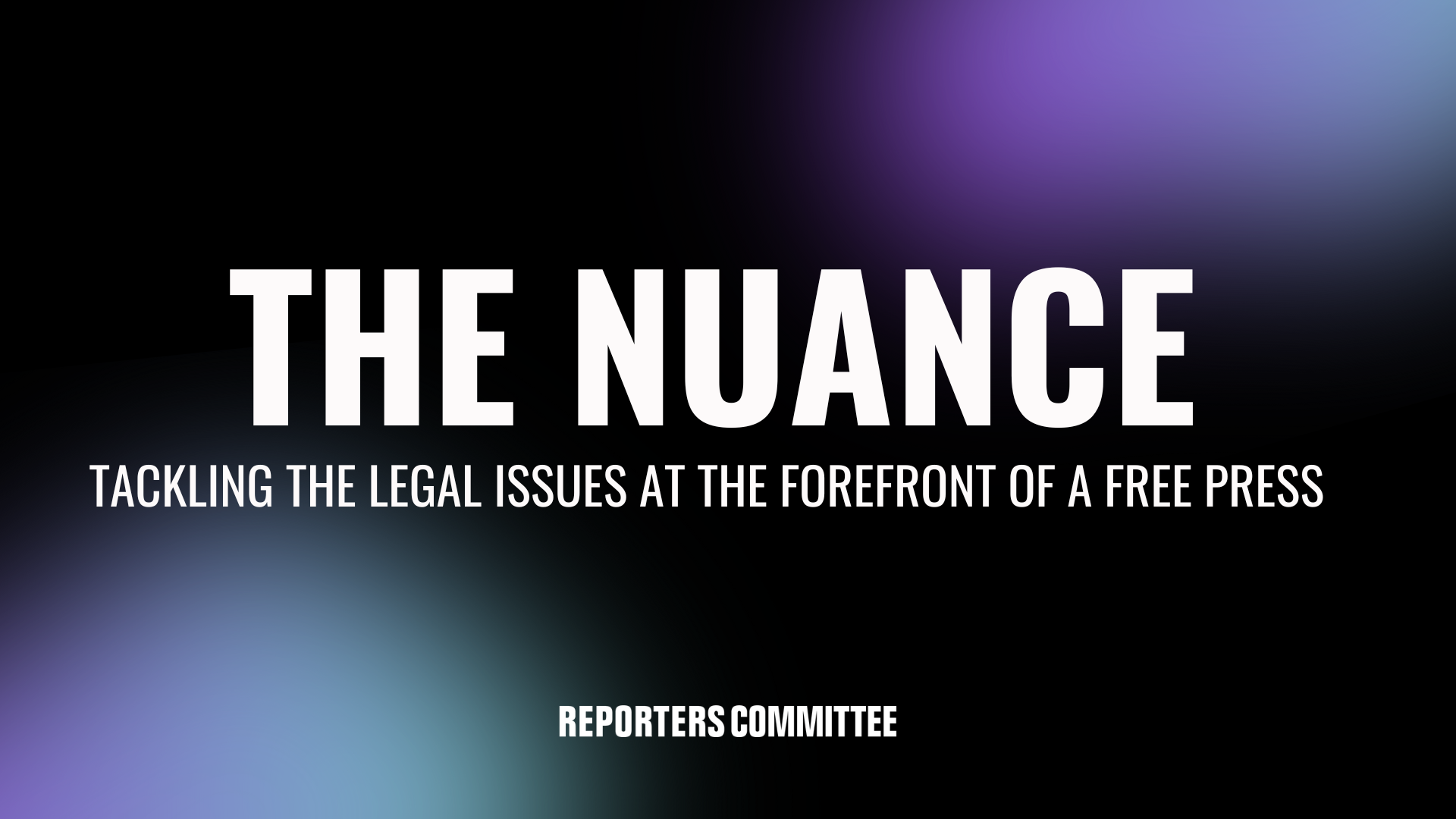The Marion raid and the Privacy Protection Act

At this point, the Aug. 11 police raid on the Marion County Record is true national — and even international — news.
We now know that the weekly newspaper in Marion, Kansas, got a tip about a drunk-driving case, confirmed the information in the tip, and reported it to the police, concerned there was something improper with the information they received. Inexplicably, the police then raided the publisher’s newsroom and home. Late last week, the Marion County attorney announced that there was an “insufficient legal nexus” between the crimes investigated and the places searched and things seized — and ordered the seized material returned.
That’s absolutely the right outcome, but the story isn’t going away. As the Reporters Committee wrote in a letter to the Marion police chief joined by more than 35 press freedom and news organizations, we need to know exactly what happened here, and it can’t happen again. In that spirit, there’s one legal issue that is bugging me in the reporting, and it might be helpful to unpack it. That is, how does the “subpoena-first” rule in the Privacy Protection Act — the federal law limiting law enforcement’s ability to conduct newsroom searches — actually work?
Before getting into the law, here’s why that’s important. During the raid, the police carted off computers, cell phones, and documents. The computers, and possibly the phones, will contain not only raw reporting material — information and documents gathered, maybe photographs, etc. — but also things like unpublished stories and other actual “news” that reflects the editorial work of the reporters at the Record. There is no subpoena-first rule for the latter. In other words, it receives higher protections than the raw “documentary material” that is obtainable with a subpoena.
Here’s how that works.
“Work product” is defined in 42 U.S.C. 2000aa-7(b) as “materials” prepared by any person “in anticipation of communicating such materials to the public,” possessed “for the purposes of communicating such materials to the public,” and, crucially, “include mental impressions, conclusions, opinions, or theories of the person who prepared, produced, authored, or created such material.” Put another way, “work product” would include drafts of stories, story outlines, a journalist’s notes, edited video, or similar material that reflects the editorial judgment of the creator.
“Documentary materials” under 42 U.S.C. 2000aa-7(a) means “materials upon which information is recorded,” and the definition gives examples like “written or printed materials, photographs, motion picture films, negatives, video tapes, audio tapes, and other mechanically, magnetically or electronically recorded cards, tapes, or discs.”
Neither category includes contraband, the fruits of a crime, things criminally possessed, or property designed or intended for criminal use.
Under the “unlawful acts” section of the law, 42 U.S.C. 2000aa, police may not search for or seize work product with only two exceptions. The first is the so-called suspect exception, where officers have “probable cause to believe that the person possessing such materials has committed or is committing the criminal offense to which the materials relate.” Crucially, that does not apply when the relevant offense consists of the “receipt, possession, communication, or withholding” of the material (save for cases involving national defense information and child sexual exploitation). The second exception is when the immediate seizure is necessary to prevent the death of, or serious bodily injury to, a human being.
Now, for documentary materials, those two exceptions — the suspect exception and threats to life or limb — also apply, but the statute adds two more. The first is when there is “reason to believe” that a subpoena could result in the “destruction, alteration, or concealment of such materials.” And the second is the “subpoena-first” rule. That is, warrants are permissible where the recipient of the subpoena has not complied and all appellate remedies have been exhausted, or “there is reason to believe that the delay in an investigation or trial occasioned by further proceedings relating to the subpoena would threaten the interests of justice.” For that latter catch-all, the person possessing the materials must be afforded an opportunity to submit an affidavit explaining why the materials are not subject to seizure.
In short, it is true that the “subpoena-first” exception reflects the law’s intention that police always use the least intrusive means possible when inquiring into the business of the newsroom, and, in practice, gives affected journalists and news organizations the ability to negotiate or challenge a legal demand. But it’s important to remember that there is no such rule for a reporter’s actual work, in recognition of the heightened sensitivity there. And that’s potentially relevant in the Marion case in that the police department may have seized work product related to the newspaper’s investigation into the police chief himself.
We will continue to follow this case with the greatest interest.
Like what you’ve read? Sign up to get The Nuance newsletter delivered straight to your inbox!
The Technology and Press Freedom Project at the Reporters Committee for Freedom of the Press uses integrated advocacy — combining the law, policy analysis, and public education — to defend and promote press rights on issues at the intersection of technology and press freedom, such as reporter-source confidentiality protections, electronic surveillance law and policy, and content regulation online and in other media. TPFP is directed by Reporters Committee attorney Gabe Rottman. He works with RCFP Staff Attorney Grayson Clary and Technology and Press Freedom Project Fellow Emily Hockett.